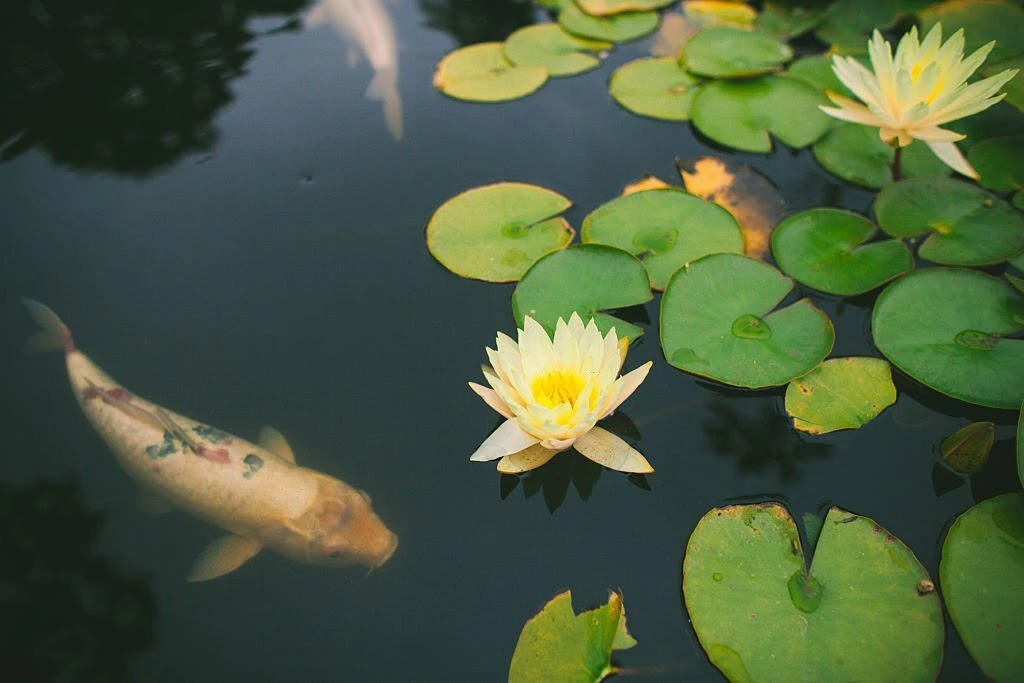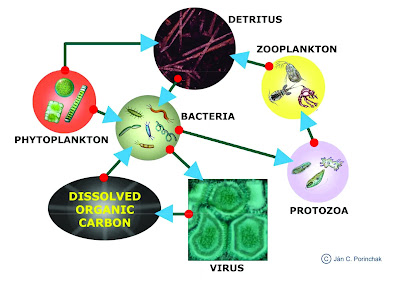1. Introduction
2. Decoding 'Ponds': Nature's Tranquil Reservoirs
3. Sunlight: The Vital Life Force of Ponds
4. Pond Ecosystem
6. FAQs
2. Decoding 'Ponds': Nature's Tranquil Reservoirs
3. Sunlight: The Vital Life Force of Ponds
4. Pond Ecosystem
- Producers
- Consumers
- Decomposers
6. FAQs
Unraveling the Dynamics of Pond Ecosystems
An ecosystem is a vibrant and intricate interplay of plant, animal, and microorganism communities, harmoniously synchronized with the nonliving environment. It's crucial to grasp that the organisms residing within an ecosystem are categorized into distinct roles: producers, consumers, and decomposers.
In other words, an ecosystem refers to a complex, interconnected system comprising living organisms (plants, animals, microorganisms) and their physical environment (including non-living elements like soil, water, and air) within a specific area. These components interact with each other through various biological, chemical, and physical processes, forming a dynamic and balanced ecological unit.
The term "ecosystem" was first coined by the British ecologist Arthur Tansley in 1935. Tansley derived it from the Greek words "oikos", meaning "household" or "place to live", and "systema", which means "system" or "organized entity". He introduced this term to emphasize the interconnectedness and interdependence of living organisms with their environment.
Decoding 'Ponds': Nature's Tranquil Reservoirs
A pond, characterized by its serene waters, lacks the tumultuous churn of waves and is relatively shallow, preventing significant temperature disparities from surface to depth. Typically, it boasts a bed of silt or mud, adorned with aquatic flora along its periphery and interspersed within. Nevertheless, discerning between a pond and a lake can be challenging, given that these terms are somewhat arbitrary; the ecosystems they represent exist on a spectrum. Broadly speaking, ponds exhibit temperature shifts in tandem with the surrounding air, maintaining a relative uniformity. In contrast, lakes, owing to their larger expanse, undergo thermal stratification during summer and winter, with these layers undergoing turnover in the transitional seasons of spring and fall.
Sunlight: The Vital Life Force of Ponds
Ponds derive their vitality from the sun, much like any other ecosystem. At the heart of this energy exchange are the primary producers: plants. Through the alchemy of photosynthesis, the chlorophyll in aquatic plants harnesses the sun's energy, transmuting carbon dioxide and water into organic compounds and life-sustaining oxygen. For these plants, nitrogen and phosphorus serve as indispensable nutrients. Their introduction can amplify primary productivity. However, an excess of these elements may trigger algal blooms, culminating in a phenomenon known as eutrophication. (For a more in-depth exploration, refer to our article on Ponds & Eutrophication).
Pond Ecosystem
1. Producers
- Phytoplankton: Often referred to as "wandering plants," phytoplankton are minuscule algae that meander through the open water, bestowing it with a lush green hue. They embark on photosynthesis, utilizing the dissolved carbon dioxide in the water, and exhale life-enabling oxygen, vital for the pond's microcosm of bacteria and fauna. It's noteworthy that despite their plant-like attributes, phytoplankton are, in fact, protists.
- Periphytic Algae: These microscopic algae affix themselves to substrates, imparting a slimy, greenish-brown veneer to rocks and branches. Like their planktonic counterparts, they engage in photosynthesis, generating oxygen. This primarily occurs in the lower realms of the pond, where decomposers find sustenance.
- Submerged Sentinels: Submerged plants flourish entirely underwater, their roots anchored in the pond's bed.
- Floating Foliage: This category encompasses plants that either float atop the water's surface or are rooted in the pond bed, but bear leaves and stems that dance upon the water.
- Emergent Flora: Rooted in the shallows, emergent plants extend their stems and leaves above water, straddling both aquatic and terrestrial domains.
- Shoreline Greenery: Thriving in the damp soil at the pond's periphery, shoreline plants play a pivotal role in the ecosystem's delicate balance.
2. Consumers
- Zooplankton: These minute creatures, known as zooplankton, indulge in a diet of phytoplankton or their smaller zooplankton counterparts. Among them are single-celled organisms, diminutive crustaceans, and the juvenile stages of larger creatures. Drifting through the open waters, zooplankton stand as a critical source of sustenance for various pond-dwellers.
- Invertebrates: Encompassing all creatures devoid of backbones, invertebrates come in various sizes. Macroinvertebrates, discernible to the naked eye, find their habitat exclusively in unpolluted waters.
- Vertebrates: In a pond's realm, vertebrates such as fish, frogs, salamanders, and turtles reign supreme, endowed with the structural support of a backbone.
3. Decomposers
At the heart of the pond's ecosystem lies a trove of detritus, comprising animal excrement and the remnants of expired flora and fauna. Enter decomposers, also known as detritovores, comprising bacteria and assorted organisms. Their mission: to dismantle detritus into elements that can be assimilated by primary producers, thus perpetuating the cycle of life within the ecosystem.
As this organic matter undergoes decomposition, it metamorphoses into a culinary resource for microbes and invertebrates alike. In this alchemical process, decomposers yield water and carbon dioxide, essential components of the ecosystem's dynamic equilibrium. Through their efforts, they enhance water quality by extracting nutrients from the overlying water column.
Conclusion
In essence, the pond ecosystem embodies a delicate ballet of life, a testament to the intricate interplay of its inhabitants and the nurturing embrace of its environment. Understanding these dynamics not only enriches our ecological awareness but also underscores the importance of safeguarding these tranquil reservoirs of biodiversity.
FAQs
1. What is the main producer of pond ecosystem?
The ecosystem's producers harness light energy to synthesize energy-dense compounds, primarily carbohydrates. These energy-rich molecules propel the flow of energy through the food chain. Producers encompass a range of organisms, including verdant plants, lichens, and various types of algae.
2. What are the components of a pond ecosystem?
In a standard waste stabilisation pond ecosystem, the primary non-living elements comprise of oxygen, carbon dioxide, water, sunlight, and essential nutrients. Concurrently, the living components encompass a variety of organisms including bacteria, protozoa, and a diverse array of other life forms.
3. What is a pond ecosystem called?
Pond and lake environments exemplify lentic ecosystems. The term "lentic" pertains to non-flowing or comparatively motionless water, originating from the Latin word "lentus," denoting a sluggish nature. A customary lake comprises well-defined regions of living communities intertwined with the lake's physical composition.
4. What are characteristics of a pond?
Ecologists commonly define a pond as a tranquil expanse of water with a relatively shallow depth, allowing plants to frequently span its entirety.
5. What is the function of the pond ecosystem?
Ponds hold a vital position in supplying essential ecosystem benefits to communities, encompassing water purification, mitigation of floods, facilitation of irrigation, providing hydration for livestock, fostering fish cultivation, aiding pollinator populations, and contributing to efforts in climate change mitigation.




Post a Comment
Please do not enter any spam link in the comment box